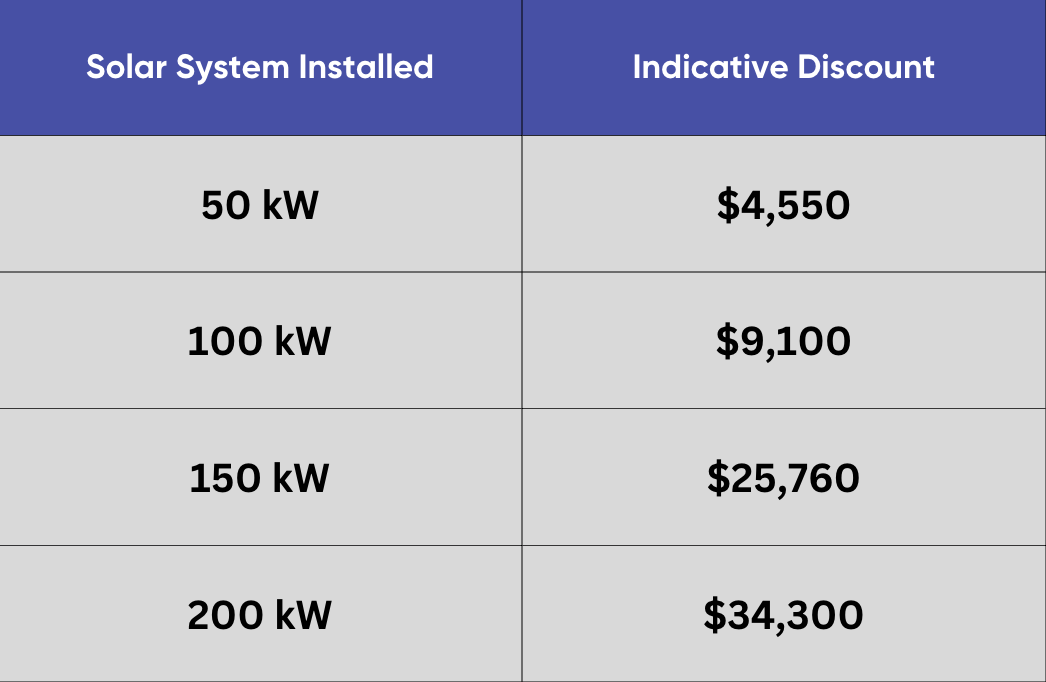Blog /
Industry Insights
Solar VIC's Game-Changer Discount for C&I Businesses
October 14, 2025
.png)
Big news for Victorian businesses! A substantial upfront discount for Commercial & Industrial solar is here, making the move to cleaner, cheaper energy easier than ever.
This new incentive, delivered via the Victorian Energy Upgrades (VEU) Commercial Solar Discount, is a massive boost to solar business cases across the state for systems between 30 kW - 200 kW.
What this means for the C&I Space
The Australian C&I sector still represents a massive, yet largely untapped, opportunity. While homeowners have embraced solar, businesses have faced a much higher financial barrier.
- Limited Federal Support: Unlike the Small-scale Technology Certificates (STCs) that offer discounts up to $38,000, larger C&I projects (100kW+) rely on Large-scale Generation Certificates (LGCs). However, the falling value of LGCs leading up to the end of the scheme in 2030, offers less reliable, long-term certainty when it comes to project returns.
- Higher Investment Hurdles: Projects must deliver shorter payback periods to be approved, and with dwindling incentive schemes in the C&I space, this is becoming more and more difficult to achieve.
- The Capital Allocation Challenge: Unlike core business assets, solar energy projects often compete against other essential capital expenditure that offer more immediate, and more often, obvious core business returns. Without a substantial subsidy to de-risk the investment and shorten the payback, energy projects frequently fails to win the necessary internal funding despite its importance, stalling otherwise financially sound projects.
What this means for VIC
By providing substantial, upfront financial assistance, it acts as the immediate capital de-risking tool that the C&I sector needed.
The geographical and market challenges unique to Victoria (lower solar yields and lower grid prices) further stretch these paybacks, making many projects that are viable elsewhere, less so in Victoria. The result? This rebate materially improves project viability, potentially shifting projects hanging in the balance, into positive territory.
The Upfront Discount
The VEU discount provides an immediate reduction on the total cost of your solar system.
- Indicative Savings: A 200 kW system could see an upfront discount of up to $34,300 (value depends on the price of Victorian Energy Efficiency Certificates - VEECs, the below assumed $70 per certificate).

Stack Your Savings
This discount can be stacked with Federal incentives, cutting capital outlay.
- Under 100 kW: Combine the VEU discount with the Federal Small-scale Technology Certificates (STCs).
- 100 kW to 200 kW: Combine the VEU discount with Federal Large-scale Generation Certificates (LGCs).
- Batteries: Systems under 100 kW may also be eligible to claim the Cheaper Home Batteries 30% discount for batteries up to 100 kWh.
For context, this VEU discount can level the playing field, giving a Victorian 100 kW system a total upfront rebate similar to one in a higher-generation state like NSW or QLD.
The Benefits
- Shortens Payback: Our modelling shows an approximate half-year reduction in payback time and a substantial boost to the IRR.
- Bolsters the business case: It overcomes the challenges of Victorian tariff structures and solar generation rates, making solar feasible for far more businesses.
What's next
We're integrating this powerful new incentive into the Orkestra platform for all our customers. We're working quickly to ensure the discount, certificate prices, and eligibility rules are accurately modelled.
Stay tuned as we will be providing updates as we learn more.

